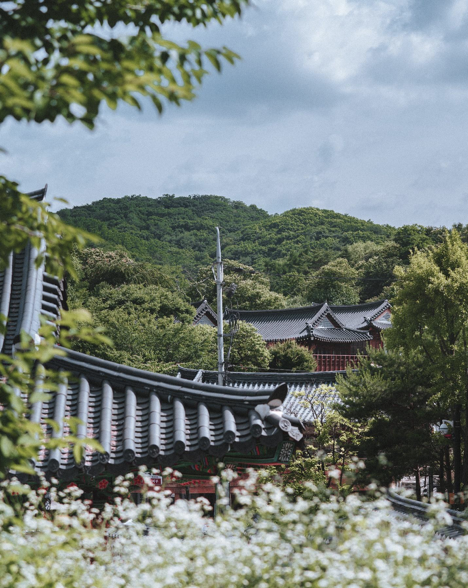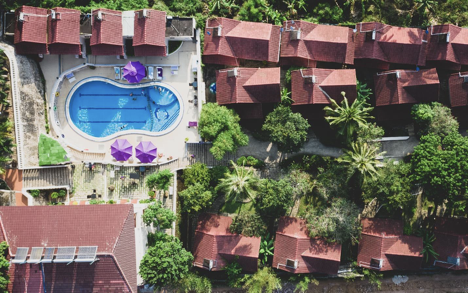Introduction
Every house has a roof but not everyone uses the roof for anything other than it providing shelter. Besides the normal shelter the roofs provide, you can utilize your rooftops for gardening, also known as green roofs. There are a ton of benefits for you and the environment when done correctly.

What are heat islands and why is it important to understand?
To understand how rooftop gardening saves energy, it’s vital that we first understand how an urban heat island works.
The concept of an urban heat island states that the temperature found in urban areas is comparatively higher than their rural counterparts. This is to prove that with urban development comes some cost that you have to pay to enjoy that progress. One of the costs is the increase in heat that we have to face.
Heat islands happen on the surface and in the air. On hot days, the sun heats exposed surfaces such as roofs, pavements, and roads, considerably hotter than the surfaces that are not exposed to sunlight. The objects that are in shades or moist surfaces are closer to air temperature.
The exposure of sun warms up surfaces like concrete, asphalt, and other materials that are used in buildings and other man-made items. The resultant heated items create a zone of hotter air that is known as heat islands.
Energy consumption and Roof Gardens
Since we’ve established how heat island works, we can talk about how you can save energy by employing the use of roof gardens. While the concept of heat islands is beneficial for cities in winters, it’s also the prime reason behind cities and metropolitan areas getting melting hot in summers.
Because of the extra heat, the machinery needs to work harder to generate the same output. The machinery normally includes air conditioners, coolers, and fridges but nearly all kinds of electrical equipment are affected by extra heat. Even laptops and mobile phones start thermal throttling when they heat. All of the extra electricity use results in extra electricity bills and much more effort by the electrical grids.
Many energy-saving planners are encouraging people to do rooftop gardening because that will reduce the extra load on various electric devices. If you use Cirro Energy Plans they also have some tips on energy saving.
The rooftop gardens come in handy to save the day in such situations. According to a study by the National Research Council of Canada, it was found that on a sunny day, a green roof stays at a moderate temperature of 77F, but an exposed rooftop can go as high as 158F.
Energy Savings with roof gardens
Because of the roof gardens and their cooling effect, the energy savings are quite substantial. According to the same Canadian report, there was a huge difference in air-conditioning requirements. The demand went from 6.0-7.5 kWh (exposed roof) to 1.5 kWh (green roofs). The difference was massive at 75 percent.
Other benefits
Architectural benefits
The benefits of roof gardens are not limited to energy consumption advantages. Roof gardens bring much more than just great energy savings. While most normal roofs have certain reactions based on different weathers that include sunny, windy, snowy, and rainy weathers, roof gardens leapfrog normal roofs and don’t face these reactions at all. Wondering how? Let us explain.

Extreme temperatures, either too hot or too cold, have certain effects on roof membranes. The membranes start expanding in extremely hot weather and shrinking in extremely cold weather. The shrinking or expanding effect makes it hard for the roof to survive properly. It also considerably reduces the lifespan of the rooftop.
The roof gardens can help in such cases. According to Canadian research, the temperature fluctuations that the bare roof faced on a daily basis was 83F while the roof gardens reduced this to merely 22 F. To talk about the lifespan, the government of Roanoke, VA installed a roof garden on the roof of its municipal building. About 20-60 years of life were added to the current roof.
Water management
The benefits don’t end here. Another major advantage of green roofs is their management of stormwater and rainwater. This is a win-win situation for the government as well as the homeowner as it reduces strain on the local sewer systems while also utilizing water by using it on the plants and shades. This cleans and reduces the water that falls from the roofs.

According to the same Canadian research quoted above, it can bring massive improvements to the sewer systems by providing it much needed relief that saves it from clogging. It also reduces the overall amount of water coming down by using it in the garden.
Lastly, the researchers found that when the rainwater came through the roof gardens, filtered through the plants’ soil, it came out much cleaner than normal rainwater does which contains pollutants.
Fun in Rooftop Gardening
While this might not appeal to everyone, gardening can be an incredibly fun hobby to have. The whole process is mentally and physically refreshing. In urban areas, gardens and gardening are rare to find. The governments take initiatives to introduce more greenery but urban areas are mostly focused on rapid development.

Rooftop gardens solve those problems as they don’t require extra land either. The added benefit of having fresh air, fresh fruits, vegetables, and most importantly, a place to relax and think makes it a great prospect to have at your home.
Conclusion
A lot of local governments have realized that the added benefits of fewer energy consumptions, decrease in water in the sewers, and other benefits of roof gardens are a great incentive to install more green roofs at homes.
This is great news for people who want to garden but can’t do it because of the cities and the requirements of the municipalities. If you are one of the gardening fanatics, rejoice as the time to fulfill your passion is here.

